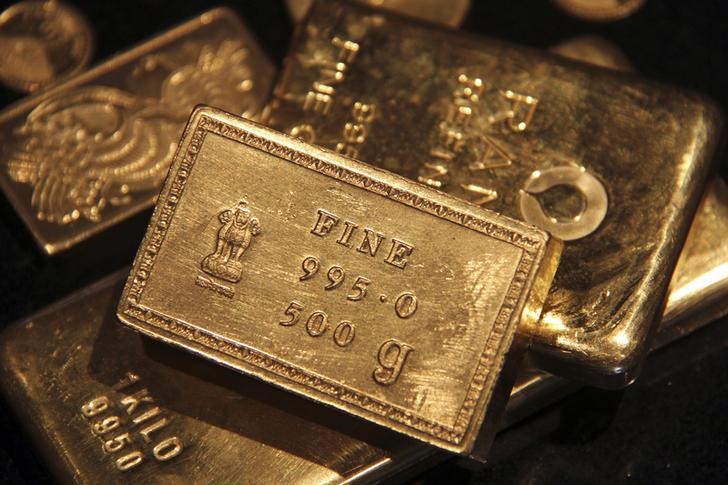By Barani Krishnan
Investing.com -- ‘Never mind the bubbly, will this last?’ — the naysayers in gold can be heard asking. ‘Of course!’ bulls in the space retort as charts suggest the yellow metal’s rise might not die as quickly as champagne fizz.
Gold posted its best week in five months as the U.S. economy technically entered into a recession. But it also finished July in the red, after losses in three months prior.
The World Gold Council, which is typically bullish on bullion, said its outlook for the second half of the year was “mixed” at best.
Despite strong demand in the first half, investment demand, particularly from exchange-traded funds, could end the year essentially flat with 2021 demand, the WGC said. At the end of the first quarter, the WGC’s outlook called for investment demand in gold to rise by more than 200 tonnes year over year.
The council noted that “a potential softening of inflation amid aggressive monetary policy tightening” along with a strong dollar “could also create headwinds for investment, both through ETFs and the OTC [over-the-counter] market.”
But the WGC also had good news for gold bugs. Weaker equities — if Fed rate hikes surprise to the high side again — as well as fixed income investments could generate upside potential for gold as a safe haven in a recessionary environment, it said.
While commodity markets, particularly oil and copper, are softening, the sector overall remains “precarious and renewed [price] spikes can’t be ruled out”, including in gold, it said.
Benchmark gold futures on New York’s Comex, August settled Friday’s session up $12.60, or 0.7%, at $1,762.90, after a session high at $1,765.85.
For the week, August gold rose 2.1%, its most since a 4.2% gain during the week to Feb. 25.
Beyond the soon-to-expire August contract, Comex’s most active gold contract for December settled up $12.60 on the day at $1,781.80. The peak for December gold was $1784.60.
Gold’s charts suggest that the yellow could continue rising until $1,800 if the dollar and bond yields retreat further from projections for softer Federal Reserve rate hikes through the remainder of the year.
“The risk of a full-percentage rate hike by the Fed is long gone,” said Ed Moya, analyst at online trading platform OANDA. “Gold is breaking out now that a peak in Treasury yields is firmly in place. Stagflation is here to stay and that should be good news for gold prices. The U.S. economy is heading towards a recession and as long as Wall Street believes the Fed will deliver a slower pace of tightening, gold should start seeing safe-haven flows again.”
Gold’s uptick this week came after the Commerce Department reported on Thursday that U.S. gross domestic product posted a negative 0.9% growth in the second quarter, after a contraction of 1.6% in first quarter GDP. The back-to-back negative quarters technically places the economy in a recession.
Separately, the Commerce Department said Friday that the Personal Consumption Expenditure Index — an inflation indicator closely followed by the Federal Reserve — grew 6.8% in the year to June after being dormant in two earlier months, intensifying the central bank’s fight against price growth.
With the PCE’s rise for June, it indicated that inflation was relentless at four-decade highs, and that the Fed may not be done yet with the super-sized rate hikes it has carried out this year to fight price growth. The central bank has raised rates four times already this year since March, with the latest two increases of 75 basis points being the highest of their kind in 28 years.
Gold is supposed to be a hedge against inflation but it has not been able to hold up to that billing for most of the past two years since hitting record highs above $2,100 in August 2020. One reason for that has been the rallying Dollar Index, which is up 11% this year after a 6% gain in 2021.
The dollar, a contrarian trade to gold, has fallen almost 1% combined the past two days against a basket of six other major currencies.
